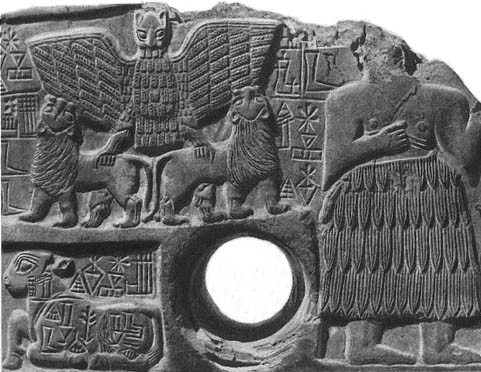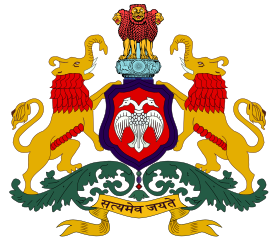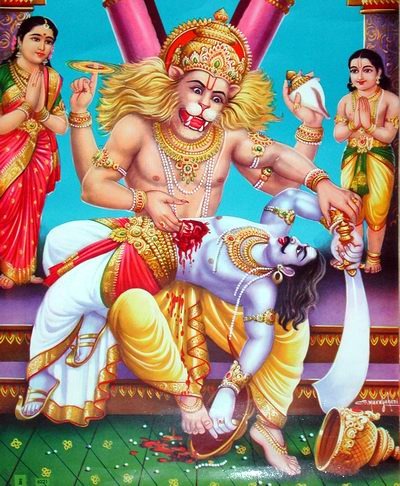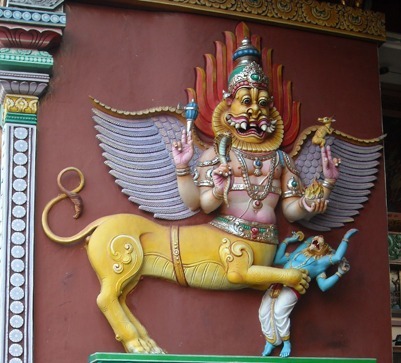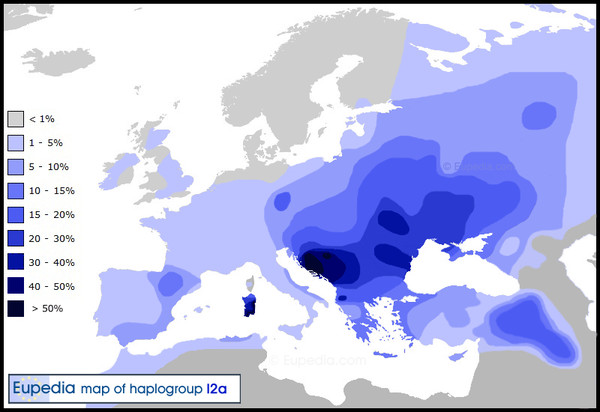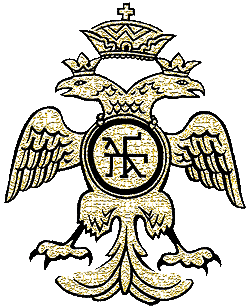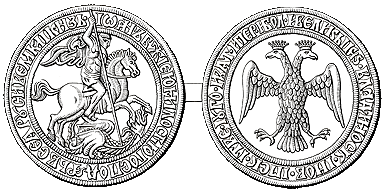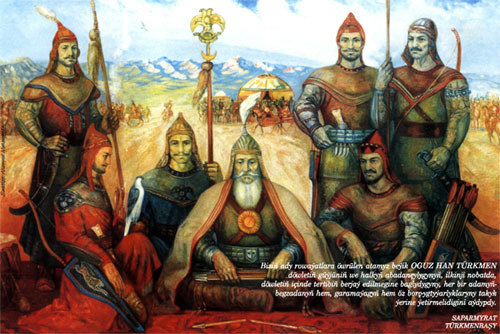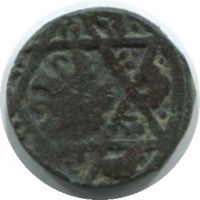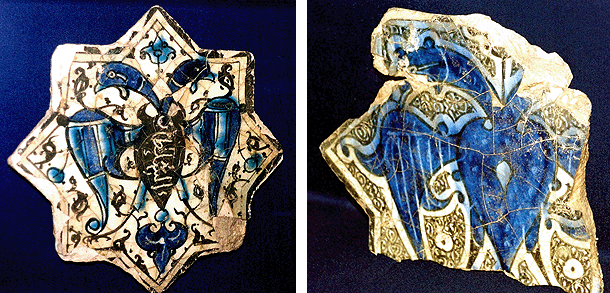Political sovereignty and economic independence
Naturally, when beginning an appearance of this kind we have to extend greetings to all the listeners in Cuba. We should also reiterate our compañero's explanation of the importance of this type of popular education directly reaching all our workers and peasants, explaining the truths of the revolution while stripping away the cover of language specifically designed to distort the truth, baring the truth of all deceptions, and showing it as it is.
I am honored to begin this series of appearances that — although initially assigned to compañero Raúl Castro — have fallen to me since they deal with economic issues. As soldiers of the revolution, we carry out the tasks that duty calls for, although often we don't have the ideal training, to say the least. Perhaps this is one of those tasks: to put into simple words, and into concepts that everyone can understand, the enormous importance of the issues of political sovereignty and economic independence, and to also explain the extremely close link between these two goals. One can sometimes precede the other — as happened at a certain point in Cuba — but they necessarily go together, and in a short time they must join together. In some cases this union is a positive affirmation, as in Cuba, which achieved its political independence and immediately afterward set out to win economic independence. There are also negative cases, countries that achieve or enter onto the road of political independence, but because they do not secure their economic independence, little by little the former gets weaker and finally disappears. Our revolutionary task today is to think not only of the present, with all the threats being made against us, but also to think of the future.
The watchword of this moment is planning: the conscious, intelligent restructuring of all the problems that will face the people of Cuba in future years. We cannot just think of a rejoinder, of a counterattack when faced with a more or less immediate aggression. We have to make an effort to draw up a whole plan to be able to predict the future. The men of the revolution have to advance toward their destiny consciously, but it is not enough for this to be done by the men of the revolution. It is also necessary for the entire people of Cuba to understand exactly what all the revolutionary principles are, so they can know that, after these times, in which some feel uncertain about the future, there will be — and let there be no doubt about it — a happy and glorious future. Because we have been the ones who have set the cornerstone of liberty in Latin America.
That is why a program of this kind is so important, a program in which everyone who has something to say comes and says it. Not that this is new, because every time our prime minister appears before the cameras he gives a masterful lesson, as only a teacher of his stature can give. But we have also planned our teaching; we are trying to divide it into specific topics and are not just answering interview questions. So we will go into the topic of political sovereignty and economic independence, as I said before. But before talking about the tasks that the revolution is carrying out to make these two terms a reality — these two concepts that must always go together — it would be good to define them and make them clear to you. Definitions always have defects; they always tend to freeze terms, to make them dead. But it would be good to at least give a general idea of these twin terms.
It happens that there are some people who do not understand or do not want to understand — which is the same thing — what sovereignty is. They are frightened when our country, for example, signs an agreement — in which, by the way, I had the honor of taking part — like the trade agreement with the Soviet Union, and also receives a line of credit from that nation.
This whole struggle is something that has its antecedents in the history of Latin America. Recently — exactly two days ago — was the anniversary of the expropriation of the Mexican oil companies during the government of General Lázaro Cárdenas.[1] We young people were very young children in those days (more than 20 years have gone by), and we cannot remember exactly the commotion it brought about in Latin America. In any case, the accusations were exactly the same as the ones Cuba has to put up with today; as the ones Guatemala had to put up with in a more recent past, and that I personally lived through; and as the accusations all countries that decide to follow this road of liberty will have to put up with in the future. We can say today, almost without making a caricature, that big business, the news media, and the opinion columnists in the United States provide us the key to a leader's importance and honesty — only in reverse. When a leader is most attacked, then undoubtedly he is better. And today we have the privilege of being the most attacked country and government, not only at this moment, but perhaps ever in the history of Latin America, much more than Guatemala, and perhaps more than Mexico in 1938, or 1936, when General Cárdenas ordered the expropriation. Oil at that time played a very important role in Mexico's life. In our case sugar has the same importance: the role of a single product that goes to a single market. “Without sugar there is no country,” screamed the spokesmen of reaction. And they also believe that if the market that buys our sugar stops doing so, the country's ruin will be absolute. As if that market were buying our sugar just because they want to help us out.
For centuries political power was in the hands of slave-owners, then of feudal lords. And to facilitate their war-making against enemies and against rebellions of the oppressed, they delegated power to one man among them, the one who united them, the most determined one, the most cruel perhaps. He became king, the sovereign, the despot. Little by little, throughout various epochs of history, he imposed his will until at a certain point it became absolute.
Naturally, we are not going to recount the whole historical process of humanity. And anyway, the times of the kings are gone. There are just a few token ones left in Europe. Fulgencio Batista never thought of calling himself Fulgencio I. It was enough for him that a certain powerful neighbor recognized him as president, and that the officers of an army obeyed him. That is, he had the support and obedience of those with the physical power, with the material forces, with implements of destruction. They supported and obeyed him as the strongest among them, as the most cruel, or as the one with the best friends abroad.
Today there are kings without crowns; they are the monopolies, the true masters of entire nations and at times of entire continents. That has been the case until now on the African continent and a good part of the Asian continent and unfortunately on our Latin American continent as well. Other times they have tried to rule the world. First it was Hitler, a representative of the big German monopolies who tried to take the idea of the superiority of a race and impose it on the world in a war that cost 40 million lives. The importance of the monopolies is immense, so great that it makes political power disappear in many of our republics. Some time ago I was reading an essay by Papini where his character, Gog, bought a republic and said that although the republic thought it had presidents, legislatures, armies and that it was sovereign, he had actually bought it. The caricature is exact. Some republics have all the formal characteristics necessary to be one, but actually depend on the all-embracing will of the United Fruit Company, for example, whose hated director was a lawyer who is now deceased. Others are dependent on Standard Oil or some other oil monopoly, while still others are under the control of the kings of tin or the coffee merchants. These are just some examples on our continent, not to mention Africa or Asia.
In other words, political sovereignty is a term not to be sought in formal definitions. Rather we have to go deeper, we have to look for its roots. All the treaties, codes of law and politicians in the world maintain that national political sovereignty is an idea inseparable from the notion of a sovereign state, of a modern state. If that were not so, some powers would not feel obliged to call their colonies associated free states, that is, to conceal colonization with a phrase.[2] Whether the internal regime of each nation allows its sovereignty to be exercised to a greater or lesser degree, or in full, or absolutely not at all — that should be a matter to be decided by that nation. However, national sovereignty means, in the first place, the right of a country to have no-one interfere in its life, the right of a people to choose whatever form of government and way of life suits it. That should depend on its will, and only that nation can decide whether a government changes or not. But all these concepts of political sovereignty, of national sovereignty, are fictitious if there is no economic independence to go along with them.
At the beginning we said that political sovereignty and economic independence go hand in hand. If a country does not have its own economy, if it is penetrated by foreign capital, then it cannot be free from the tutelage of the country it is dependent on. Much less can a country make its will prevail if it clashes with the powerful interests of the country that dominates it economically. That idea is not yet absolutely clear to the Cuban people, and it is necessary to go over it time and again. The pillars of political sovereignty, which were put in place on January 1, 1959, will be totally consolidated only when we achieve absolute economic independence. And we can say we are on the right track if every day we take measures to assure our economic independence. Anytime that governmental measures cause a halt along this road or a turning back, even if it's only one step, everything is lost and inevitably begins to return to the more or less covert systems of colonization, according to the given country's characteristics and social context.
Right now it is very important to understand these concepts. These days it is very difficult to do away with a country's national political sovereignty by the use of pure and simple violence. The most recent two examples are the merciless and treacherous attack by the English and French colonialists on Port Said in Egypt and the landing of U.S. troops in Lebanon. [3] But the marines are no longer sent in with the same impunity as before. And it is much easier to put up a veil of lies than to invade a country simply because some big monopoly's interests have been injured. It is difficult in these days of the United Nations, where all peoples want to have a voice and vote, to invade a country that is demanding its right to exercise its sovereignty.
It is not easy to calm domestic or international public opinion about this. A tremendous propaganda effort is needed to prepare the conditions to make such an intervention appear less odious. That is precisely what they are doing to us. We should never stop pointing out that they are preparing the conditions to subdue Cuba in whatever way necessary, and that it is up to us alone not to let that aggression take place. Economically they can go as far as they want, but we must secure a consciousness in our country such that if they want to launch physical aggression (directly with soldiers from the same country as the monopolies or with mercenaries from other countries), it would be so costly they cannot do it. They are trying to drown us, preparing the necessary conditions to drown this revolution in blood if need be, just because we are on the road toward economic liberation, because we are setting an example of measures aimed at totally liberating our country and at making our level of economic liberty equal the level of our political liberty and of our political maturity today. We have taken political power. We have begun our struggle for liberation with this power firmly in the hands of the people. The people cannot even dream of sovereignty unless there is a power that defends their interests and aspirations. People's power means not only that the Council of Ministers, the police, the courts and all other government bodies are in the hands of the people. It also means that economic bodies are being transferred to the people. Revolutionary power or political sovereignty is the instrument for the conquest of the economy and for making national sovereignty a reality in its broadest sense. In Cuban terms, it means that the revolutionary government is the instrument so that in Cuba only Cubans have power, in every sense of the word: from politics, to being able to decide what to do with the riches of our land and our industry.
We cannot yet swear on our martyrs' graves that Cuba is economically independent. It cannot be so when having just one ship detained in the United States forces a factory in Cuba to stop production, when simply at the command of any of the monopolies a workplace here is paralyzed. Cuba will be independent when it has developed all its means, all its natural resources, when it makes sure through agreements, through trade with the whole world, that no unilateral action by any foreign power can prevent it from maintaining its rhythm of production, and keeping its factories and farms producing at the best possible rate according to plans that we have drawn up.
What we can say for sure is the exact date on which Cuba won its national political sovereignty as a first step. That was the day that people's power was victorious, the day that the revolution triumphed, that is, January 1, 1959. This was a day that more and more is being established as the beginning not only of an extraordinary year in the history of Cuba, but also as the beginning of an era. And we even like to think that it is not only the beginning of an era in Cuba, but the beginning of an era in Latin America. For Cuba, January 1 is the culmination of July 26, 1953, and August 12, 1933, and also of February 24, 1895, or October 10, 1868.[4] But for Latin America, too, it is a glorious date. It may be the continuation of that May 25, 1809, when Murillo rose up in arms in Upper Peru, or of May 25, 1810, the date of the Cabildo Abierto in Buenos Aires, or of any other date that marks the beginning of the struggle of the peoples of Latin America for their political independence at the beginning of the 19th century.5
This date, January 1, won at an enormously high price for the people of Cuba, sums up the struggle of generations and generations of Cubans, since the formation of the nationality, for sovereignty, for the homeland, for Cuba's liberty, and for full political and economic independence. No-one can talk now of reducing it to a bloody episode, a decisive and spectacular one perhaps, but only a moment in Cuban history. Because January 1 is the date of the death of the despotic regime of Fulgencio Batista, that small native version of Weyler.[6]But it also is the birth date of the true republic, politically free and sovereign, that takes as its supreme law the full dignity of man.
This January 1 means victory for all the martyrs who came before us, since José Martí, Antonio Maceo, Máximo Gómez, Calixto García, [Guillermo] Moncada, or Juan Gualberto Gómez, whose antecedents are to be found in Narciso López, in Ignacio Agramonte, and Carlos Manuel de Céspedes. What they started was continued by the whole constellation of martyrs from our republican history: the [Julio Antonio] Mellas, the [Antonio] Guiterases, the Frank Países, the José Antonio Echeverrías, and the Camilo Cienfuegoses.
As always, Fidel, having devoted everything to battles on behalf of his people, has been aware of the magnitude of revolutionary firmness, of the greatness of the date that made possible the collective heroism of an entire people: this marvelous Cuban people from which sprang the Rebel Army, a continuation of the mambí army.[7] That is why Fidel always likes to compare the tasks now to be undertaken with those that lay ahead for the handful of survivors of the legendary Granma landing. When they disembarked the Granma, all individual hopes were left behind. They were beginning the struggle in which an entire people had to either triumph or fail. Because of this, because of that great faith and that great union between Fidel and his people, they never lost heart, not even in the most difficult moments of the campaign. They knew that the struggle was not centered and isolated in the mountains of the Sierra Maestra, but that the struggle was taking place everywhere in Cuba, wherever a man or a woman raised the banner of dignity.
Fidel knew, as all of us knew later, that it was a struggle like today's, in which the entire Cuban people would triumph or be defeated. Now he insists on the same terms and says: either we are all saved or we all sink. You know the phrase. The obstacles to overcome are difficult, as they were in those days following the Granma landing. But now our fighters are not to be counted by the ones or by the dozens but by the millions. All of Cuba has become a Sierra Maestra to fight, wherever the enemy may be, the decisive battle for freedom, for our homeland's future and honor. And at this point, unfortunately, Cuba alone is ready to wage this struggle.
Cuba's battle is the battle of all Latin America; not the definitive one, at least not definitive in one sense. Even assuming Cuba loses the battle, it would not be lost for all Latin America. But if Cuba wins this battle, the entire continent will have won the fight. That is the importance of our island, and that is why they want to suppress this “bad example” we are setting. Back in 1956, the strategic objective, that is, the broad objective of our war, was to overthrow the Batista dictatorship. In other words, the reestablishment of all the ideas of democracy and sovereignty and independence that were trampled underfoot by the foreign monopolies. Starting from the days of March 10, [1952] all Cuba had become a garrison — a garrison like those that we are now turning over to the people [as a school]. All of Cuba was a garrison. March 10 was not the work of one man but of a caste, a group of men united by a series of privileges. One of them, the most ambitious, the most daring, the Fulgencio I of our story, was the captain. This caste defended the interests of the reactionary class in our country, the large landowners, parasitic capitalists, and was closely linked to foreign colonialism. It was made up of a whole series of specimens who disappeared like magic — from the cheap huckster politicians to the journalists who hung around presidential halls, from the scabs to the czars of gambling and prostitution.
The fundamental strategic objective of the revolution at that time was achieved on January 1 with the destruction of the dictatorship that for almost seven years had brutalized the Cuban people. But our revolution, which is a conscious revolution, knows that political sovereignty is closely linked to economic sovereignty.
This revolution does not want to repeat the mistakes committed in the 1930s, simply getting rid of one man without realizing that this man is a representative of a class and of a status quo, and that if that whole status quo is not destroyed, then the enemies of the people create another man.[8] For that reason the revolution is compelled to destroy the roots of the evil that afflicted Cuba. We would have to imitate Martí and repeat once again that a radical is nothing less than that — one who goes to the roots. Those who do not see the roots of things, those who do not aid men's security and happiness, are not radicals. This revolution is determined to eliminate injustice at the roots, as Fidel has said paraphrasing Martí.
We have achieved the great strategic goal of the fall of the dictatorship and the establishment of the revolutionary power that arose from the people and is responsible to it, whose armed branch is now an army synonymous with the people. Today, the new strategic goal is the conquest of economic independence, once again the conquest of total national sovereignty. Yesterday, the tactical objectives of the struggle were the Sierra, the plains, Santa Clara, the Presidential Palace, Camp Columbia, the production centers — which were to be conquered through direct attack, a siege or underground action. Our tactical objectives today are the triumph of the agrarian reform, which provides the basis for the country's industrialization, diversification of foreign trade, and raising the people's living standards to reach that great strategic goal of the liberation of the national economy.
The economic front has turned out to be the main battlefield, although there are others of enormous importance, such as education, for example. Recently, we talked about the importance of an education system that would make it possible to provide the necessary technicians for this battle. But that itself indicates that in this battle the economic front is the most important, and that education is aimed at providing officers for this battle in the best possible conditions.
I can call myself a military man, a military man of the people, who took up arms like so many others, simply responding to a call, who fulfilled his duty when it was necessary, and who today is assigned to the post you know. I do not pretend to be an economist. Like all revolutionary fighters, I am simply in this new trench where I have been assigned, and I have to worry, as few others do, about the fate of the national economy, since the future of the revolution depends on it.
These battles on the economic front are different from those waged in the Sierra. These are battles of positions, battles where the unexpected almost never happens, where you gather troops and prepare the attacks very carefully. Victories are the result of work, perseverance and planning. This is a war that demands collective heroism, sacrifice by all. And it does not last a day or a week or even a month. It is very long; it is longer the more isolated we are, and longer still the less we study all the characteristics of the battlefield and analyze the enemy over and over again. It has to be waged with many weapons, too, from the contribution of four percent from the workers for the country's industrialization,[9] to work in each cooperative, to the establishment of branches hitherto unknown in the national industry such as citrochemicals, heavy chemicals, or the steel industry. And the main strategic goal — and we must underline this constantly — is the conquest of national sovereignty.
In other words, in order to conquer something we have to take it away from somebody, and it is good to speak clearly and not hide behind concepts that could be misinterpreted. That something we must conquer — the country's sovereignty — has to be taken away from that somebody called monopoly. And that somebody called monopoly — although monopolies as a rule have no homeland, at least they have a common definition — all the monopolies that have been in Cuba, that have benefited from the Cuban land, have very close ties with the United States. That means that our economic war will be fought against the big power to the north, that our war is not a simple one. It means that our road to liberation will be opened up with a victory over the monopolies, and concretely over the U.S. monopolies. Control of one country's economy by another without a doubt hurts that country's economy. Fidel asked on February 24 at the CTC: How can anyone think that a revolution would sit back and wait for a solution from private foreign investment capital? How can anyone think that a revolution that was born defending workers' rights, which had been trampled underfoot for many years, would sit back and wait for the solution to the problem from private foreign investment capital, which acts according to its interests, which is not invested in products that are the most necessary for the country, but rather the most profitable for the owners? So the revolution could not follow this road; this was a road of exploitation. In other words, another road had to be found.
We had to strike at the most troublesome of all the monopolies — the monopoly in land ownership — destroy it, turn the land over to the people, and then start the real struggle, because despite everything, this was just the first contact between two enemies. The battle was not waged at the level of the agrarian reform, that is a fact.[10] The battle will be waged now. It will be waged in the future, because although the monopolies had large landholdings here, that is not where the most important holdings are. The most important ones are in the chemical industry, in engineering, in oil, and that is where Cuba's example worries them, the “bad example,” as they call it. We had to start with the agrarian reform, however. One and a half percent of the landowners — Cubans or foreigners, but owners of Cuban land — possessed 46 percent of the national territory, while 70 percent owned only 12 percent of the national territory. There were 62,000 farms that had less than three-quarters of a caballería. Under our agrarian reform two caballerías are considered to be the vital minimum, that is, the minimum required on nonirrigated land for a family of five to live satisfying their minimum needs. In Camagüey, five companies, five or six sugar companies, controlled 56,000 caballerías of land — 20 percent of Camagüey's total area.
Besides that, the monopolies own the nickel, the cobalt, the iron, the chromium, the manganese and all the oil concessions. In the case of oil, for example, the concessions, adding those granted and those requested, came to three times the national territory. In other words, the entire national territory had been granted, as had the keys and the Cuban continental shelf. Besides that, there were zones that had been requested by two or three companies that were in litigation. We have proceeded to eliminate these holdings of U.S. companies.
Housing speculation was also hit, first by the lowering of rents and now by INAV's [National Institute of Savings and Housing] plans to provide low-cost housing. Here there used to be many housing monopolies, and even though perhaps they were not U.S.-owned they were parasitic capital linked to the U.S. monopolies, at least in regard to the ideological conception of private property in the service of one person for the exploitation of a people. We put an end to speculation and the monopoly in domestic trade — or took the first step toward ending it — with the revolutionary government's intervention in the big markets and the creation of people's stores, of which there are 1,400 in the Cuban countryside.
You know how prices go up. If there are peasants listening to us, you will know of the great difference between the current prices and the prices charged by the cutthroats throughout the Cuban countryside in those ghastly days. The unbridled actions of the public utility monopolies have at least been reined in. Telephones and electricity are two examples. Monopolies figured in all aspects of the Cuban people's life. Not only in the economy, which we are talking about today, but also in politics and culture. Now we had to take another important step in our struggle for liberation: dealing a blow against the monopolies' stranglehold on foreign trade. Several trade agreements have already been signed with various countries, and new countries are constantly coming to seek the Cuban market on an absolutely equal footing. Of all the agreements signed, the most important, without a doubt, is with the Soviet Union. It is good to emphasize this, because at this point we have already sold something unprecedented: our entire [sugar] quota, without having to sell anything on the world market. And we still have requests estimated at between one million or 800,000 to a million tons, if we do not make new contracts, new agreements, with other nations. In addition, we have secured the sale of one million tons a year for five years.
It is true that we are not being paid in dollars, except for 20 percent of that sugar. But the dollar is nothing more than an instrument for buying; the dollar has no value other than its buying power. So by getting paid with manufactured products or raw materials, we are simply using sugar like a dollar. Somebody told me that such a contract was ruinous, since the distance separating the Soviet Union from Cuba would significantly increase the price of all the goods we would import. The oil agreement has torn apart all these predictions. The Soviet Union is committed to sell Cuba oil of different specifications at a price 33 percent lower than the U.S. monopoly companies, which are but a step away from us. That is called economic liberation.
Naturally, there are some who claim all these sales by the Soviet Union are political sales. Some claim that it is being done only to annoy the United States. We can admit that this may be true. The Soviet Union, making use of its sovereignty, can, if it feels like annoying the United States, sell us oil and buy sugar from us to annoy the United States. But what do we care? That's a separate question. What their intentions may or may not be is a separate question. In our trade we are simply selling merchandise, not our national sovereignty as we used to do. We simply intend to talk on equal terms. Every time a representative of a new nation of the world comes here, now, he comes to talk on equal terms. No matter what size country he comes from, or the power of its guns. As an independent nation, Cuba has one vote at the United Nations, just like the United States and the Soviet Union. That has been the spirit in which all the treaties have been made, and that will be the spirit in which all new trade agreements will be made. We have to insist on what Martí understood and clearly stated many years ago: that the nation that buys is the one that commands and the nation that sells is the one that obeys.
When Fidel Castro explained that the trade agreement with the Soviet Union was very advantageous for Cuba, he was simply explaining... more than explaining, we could say he was synthesizing the sentiments of the Cuban people. Really, everyone felt a bit freer when we learned that we could sign trade agreements with whomever we pleased. Everyone should feel even freer today when we fully realize that we not only exercised the country's national sovereignty by signing a commercial agreement, but that it was also one of Cuba's most advantageous commercial agreements. When the time comes to analyze the onerous loans of the U.S. companies, and to compare them with the loan or credit granted by the Soviet Union for a 12-year term at a 2.[5] percent interest rate, the lowest in the history of international trade relations, then we will see its importance. It is true that this credit is for purchasing Soviet goods. But it is no less true that the loans, for example, from the Export Bank, which supposedly is an international agency, are made to buy goods in the United States. And furthermore, that they are granted to acquire specific goods from foreign monopolies. The Export Bank, for instance, lends (of course, this is a hypothetical example) the Burmese Electricity Company — let us assume the Burmese Electricity Company is [foreign-owned] just like the Cuban Electricity Company — so it lends that company 8, 10 or 15 million pesos. The company then sets up its equipment, begins to supply electricity at a very high price and with very bad service, charges huge prices, and then the nation pays. Those are the international credit systems. There is a tremendous difference between that and a loan granted to really benefit a nation, so that it is worthwhile for its sons and daughters to make a sacrifice for that loan. It would be very different if the Soviet Union had loaned 100 million pesos to a subsidiary firm it owned to establish a business here and then export the dividends back to the Soviet Union. But instead we have now planned to build a big steel plant and an oil refinery, totally national and at the service of the people.
In other words, today whatever we pay represents only the payment for what we receive, and it is a correct and honest payment, as we have seen in the case of oil. I am not saying that as we sign other contracts, in the same open way that the Cuban Government explains everything, we will be able to report extraordinarily cheap prices for all goods produced by the Soviet Union, and furthermore for all quality manufactured products. The Diario de la Marina — we have to quote it one more time — is opposed to the trade agreement. Unfortunately, I did not bring a very interesting article that gives five, six or seven reasons why it thinks the agreement is a bad one. Of course, they are all false. But not only is their interpretation false, which is bad enough. Even their news is false. It is false, for example, when they say that this means Cuba is committed to supporting Soviet moves in the United Nations. It is an entirely different matter that — in a declaration absolutely separate from this agreement and drafted by mutual accord — Cuba commits itself to struggle for peace within the United Nations. In other words, as Fidel has explained, Cuba is being accused of doing exactly what the United Nations was created for, according to its founding charter.
All the other economic issues raised have been refuted very well by our minister of trade, and suffer from very big flaws, including gross lies. The most important lie is related to the price. As you know the price of sugar naturally depends on the world market, on supply and demand. The Diario de la Marina says that if that million tons of sugar that Cuba sells is later put back on the market by the Soviet Union, then Cuba has not gained anything. That is a lie, for the simple reason that it is clearly established in the agreement that the Soviet Union can export sugar only to countries that usually buy it from them. The Soviet Union is a sugar importer, but it also exports refined sugar to some neighboring countries that have no refineries, such as Iran, Iraq, Afghanistan. And the Soviet Union will, naturally, continue to supply those countries to which it usually exports. But our sugar will be used entirely in the plans to increase that country's domestic consumption. If up in the United States they are very worried — since they are already talking in Congress itself about the Soviet Union overtaking them — if they believe the Soviet Union, then why shouldn't we? Especially when the Soviet Union tells us — and puts it in writing besides, because it's not just verbal — that this sugar is for their domestic consumption? Why does any newspaper here have to spread doubts, doubts that are picked up internationally and that can indeed adversely affect sugar prices? It is nothing but the work of the counterrevolution, of those who do not want to resign themselves to losing their privileges. On another point, with regard to the price of Cuban sugar, which merited an unwarranted comment by U.S. spokesman Lincoln Price, regarding a statement we made a few days ago; they insist that those extra 100 or 150 million dollars they are paying for our sugar is a gift to Cuba. That is not so. For that, Cuba signs tariff agreements that obligate us to buy $1.15 worth of U.S. goods for every dollar spent by the U.S. interests in Cuba. That means that in 10 years $1 billion has been transferred from the hands of the Cuban people to the U.S. monopolies.
We don't have to give things away to anybody, but if they went from the hands of the Cuban people to the hands of the people of the United States we would be happier. However, they go into the monopolies' coffers, which are only used as instruments of oppression to prevent the subjugated peoples of the world from beginning their road to liberation. The loans the United States has granted Cuba have cost Cuba 61 percent interest on every dollar — and that's on a short-term agreement, not to mention what the cost would be on a long-term agreement like the one signed with the Soviet Union. That's why at every step we have followed Martí's teachings, and in foreign trade we have insisted on diversifying as much as possible, not tying ourselves to any one buyer. And we are not only diversifying our foreign trade but also our domestic production in order to be able to serve more markets.
So Cuba is moving forward. We are living a truly brilliant moment of our history, a moment in which all the countries of Latin America have their eyes on this small island, and the reactionary governments accuse Cuba of responsibility for every explosion of popular indignation anywhere in the continent. We have stated very clearly that Cuba does not export revolutions. Revolutions cannot be exported. Revolutions take place when there are a series of insurmountable contradictions within a country. Cuba does export an example, that bad example I've mentioned. It is the example of a small people that challenges the laws of a false science called “geopolitics” and — in the very jaws of the monster, as Martí called it — ventures to hurl its cries of liberty.
That is the crime and that is the example feared by the imperialists, the U.S. colonialists. They want to crush us because we are a banner for Latin America. They want to apply the Monroe Doctrine to us, as there is a new version of the one stated by Monroe that has been presented in the U.S. Senate. Fortunately for them, I think that it was not approved or did not go beyond some committee. I had the opportunity to read the whereases — whereas it shows such a cave-dweller mentality, such an extraordinarily colonialist mentality that I think adopting it would have been a disgrace to the people of the United States. That motion revived the Monroe Doctrine, but it was much clearer. I remember perfectly that one of the paragraphs said: “Whereas: the Monroe Doctrine establishes very clearly that no country outside the Americas can enslave the American countries.” In other words, countries inside the Americas can. And this new version of the Monroe Doctrine went on to say that now the United States could intervene without having to notify the OAS, afterward presenting the OAS with a fait accompli. Well, these are the political dangers that stem from our campaign to win our economic liberation.
We have... first of all we have a time crunch, but anyway... we have the last problem, how to invest our foreign exchange reserves, how to invest the nation's efforts so that we can rapidly move our economic aspirations forward. Speaking to the workers on February 24, when he was presented with the symbolic total amount of that four percent, Fidel Castro said: “When the revolution came to power, the reserves could not have been more depleted, and the people were used to consuming more imports than what was exported.” In that situation a country has to invest. It has to save or it has to receive capital from abroad.
Now, what was our idea? To save and save, especially our foreign exchange, to develop our own industry. It replaced the idea of importing private capital. When it is a matter of private national capital, that capital is already in the country. But when it is a matter of imports — because you need capital, and the advisable solution is the investment of private capital — we have that situation.
Private foreign capital is not motivated by generosity; it's not motivated by an act of noble charity; it's not motivated by the desire to reach the people. Foreign capital is motivated by the desire to help itself. Private foreign capital is the surplus capital of a country that is transferred to another country, where wages and living conditions are lower, where raw materials are cheaper, in order to obtain higher profits. What motivates private foreign capital is not generosity but profit. And the idea that had always been upheld here was to give guarantees to private investment capital in order to solve the problems of industrialization.
In agriculture and industry together $300 million will be invested. That is the battle to economically develop our country and solve its ills. Of course, it is not an easy road. You know we are being threatened, you know there is talk of economic retaliation, you know there is talk of maneuvers, of taking away our quota, and so on. Meanwhile we are trying to sell our products. Does this mean we have to retreat? Does this mean that because they threaten us we have to abandon all hopes of improvement? What is the correct road for the people? Does our desire for progress harm anyone? Do we want to live off the labor of other peoples? Do we want to live off the wealth of other peoples? What do we Cubans want here?
We do not want to live off the sweat of others, but to live off our own sweat. Not to live off the wealth of others, but off our own wealth, so that all the material needs of our people are satisfied, and on that basis to solve the country's other problems. We don't talk of economics purely for the sake of economics, but of economics as a foundation for meeting all the country's other needs: education, a clean and healthy life, the need for a life not only of work but of recreation. How are we going to spend all those millions? That is something another compañero will explain to you in one of these talks, showing not only how but why they will be spent along the road we have chosen.
Now for the weak, for those who are afraid, for those who think that we're in a unique situation in history, that this is an insurmountable situation, and that if we don't stop or turn back we're lost, I want to read you one last quotation. It is a brief anecdote by Jesús Silva Herzog, a Mexican economist who was the author of the Oil Expropriation Law. It refers precisely to that period Mexico lived through, when international capital was also moving threateningly against the spiritual and cultural values of the peoples. The quotation is a synthesis of what is now being said about Cuba. It says:
Of course, it was said that Mexico was a communist country. The ghost of communism appeared. Ambassador Daniels, in the book I have quoted in other lectures, tells the story of going to Washington on a visit in those difficult days, and an English gentleman speaks to him about Mexican communism. Mr. Daniels says to him: “Well, in Mexico the only communist I know is Diego Rivera; but, what is a communist?” Daniels then asks the English gentleman. The latter sits back in an easy chair, ponders, stands up, and tries to offer a definition. It does not satisfy him. He sits down again, ponders once more, perspires a little, stands up once more, and gives another definition. It is not satisfactory either. And he goes on like that until finally, desperate, he says to Daniels: “Mister, a communist is anybody who annoys us.”
You can see how historical situations repeat themselves. I am sure that all of us annoy other people quite a bit. It seems I have the honor, along with Raúl [Castro], of being among the most annoying. But historical situations have their similarities. Just as Mexico nationalized its oil and was able to move forward, and Cárdenas is recognized as the greatest president that republic has had, so we will continue to forge ahead. All those who are on the other side will call us whatever names they wish. They will say whatever they wish. What is certain is that we are working for the benefit of the people, that we will not go back, and that they, the expropriated, the confiscated, will not return.
[1]. Mexico nationalized British- and U.S.-owned oil companies in 1938.
[2]. This is a reference to the “Associated Free State of Puerto Rico,” a U.S. possession.
[3]. Egypt was attacked in October-November 1956 by British, French, and Israeli troops following its nationalization of the Suez Canal. In July 1958, Washington landed 15,000 marines in Lebanon to bolster the pro-U.S. regime there in the face of popular opposition.
[4]. On August 12, 1933, dictator Gerardo Machado was deposed in a massive popular revolt. On February 24, 1895, the final Cuban independence war against Spain began. October 10, 1868, was the beginning of the first independence war.
[5]. The 1809 uprising in Upper Peru (now Bolivia), led by Pedro Domingo Murillo, was one of the first revolts against Spanish rule. It was defeated and Murillo was hanged. In 1810 an autonomous government was established in Buenos Aires by the Cabildo Abierto (Open Council).
[6]. Valeriano Weyler y Nicolau was commander in chief of Spanish forces in Cuba during the 1895-98 independence war. He gained notoriety for torturing and murdering captured independence fighters.
[7]. The term mambí refers to Cuba's fighters in the independence wars against Spain.
[8]. The revolutionary upsurge of 1933-35, although successful in ousting dictator Gerardo Machado, was not able to end Cuba's status as a U.S. semicolony. The person who emerged as Cuba's strongman following these events was Fulgencio Batista.
[9]. The Tenth Congress of the Confederation of Cuban Workers (CTC) in November 1959 voted to encourage workers to donate four percent of their wages to a fund to promote Cuba's industrialization.
[1]. The agrarian reform law of May 17, 1959, set a limit of 30 caballerías (approximately 1,000 acres) on individual landholdings. Implementation of the law resulted in the confiscation of the vast estates in Cuba — many of them owned by U.S. companies. These lands passed into the hands of the new government. The law also granted sharecroppers, tenant farmers and squatters a deed to the land they tilled. Another provision of the law established the National Institute of Agrarian Reform (INRA).



